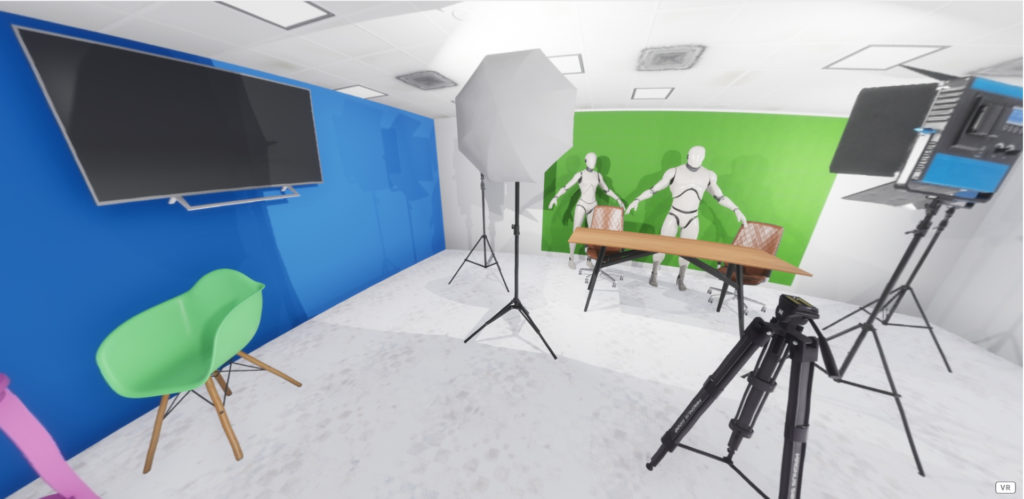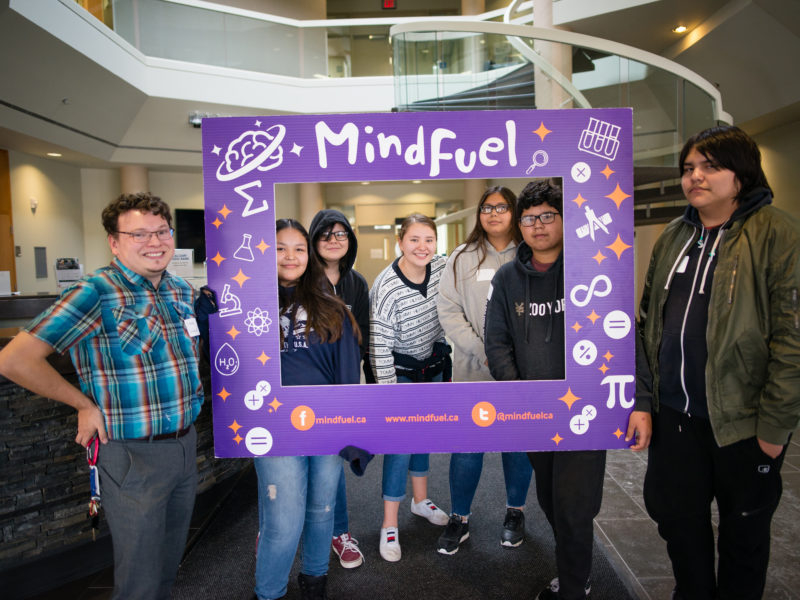Project Insights Report
Digital Transformation Strategy
 Executive Summary
Executive Summary
There is growing demand for workers with advanced digital skills. To address this demand, Georgian College aimed to modernize itself. Guided by a Digital Transformation Strategy, this project involved integrating campus-wide extended reality (XR) technologies to enhance teaching and learning, remote collaboration and tools for daily work. It also examined XR’s potential in creating inclusive educational experiences across its diverse student body at seven campuses in Central Ontario, particularly for underrepresented communities.
Programs were implemented through three pilots at the college, department and course levels. A variety of virtual reality (VR), augmented reality and mixed reality applications were used. In total, over 300 VR headsets were deployed through the program. An Immersive Learning Research Network Virtual Campus, which hosted courses, events and other experiences, engaged 1,000 students and faculty members and was used to teach 16 courses. At the department level, VR programs in a human anatomy course increased student motivation and learning enjoyment—compared to standard 2D teaching—among a total of 21 students.
The experiences and outcomes of this project offer lessons for other educational institutions seeking to integrate similar technologies. Coordinators identified key practices other institutions might consider if they, too, are implementing these kinds of technologies. These practices relate to inclusion and accessibility, cross-department collaboration and training, comprehensive onboarding and pilot testing.
Key Insights
Georgian College’s Digital Transformation Strategy project deployed over 300 VR headsets and several applications.
A dedicated, interdisciplinary team is key for successful XR implementation.
XR initiatives should be aligned with institutional goals of equity, diversity and inclusion (EDI).
 The Issue
The Issue
Demand is growing for workers with advanced digital skills, such as XR technologies, which include VR, augmented reality and mixed reality. In educational settings, XR technologies can be used as immersive, interactive learning tools. They are useful in teaching content related to 3D spatial arrangements (such as in engineering, manufacturing and anatomy) and for procedural training (including safety training, mechanical assembly, repairs). They can also simulate scenarios that are too costly, impractical or dangerous to be replicated in real life. Studies have shown the potential impact of XR on learning outcomes, such as efficacy, motivation and engagement. In educational settings, however, there is a risk that XR may be used because of its novelty, without adequate consideration of its effectiveness or how it is best adopted and integrated into these settings.
Georgian College adopted a Digital Transformation Strategy that aimed to modernize its educational programs. The college, located in central Ontario, has seven campuses and more than 13,500 full-time students. Its strategy prioritizes inclusivity so that all students benefit from XR, especially those from rural communities and underrepresented groups such as Indigenous Peoples, newcomers, 2SLGBTQIA+ people, youth and people with disabilities. The college setting offered the potential to implement XR technologies with an intentional approach, applying educational theory and research while systematically investigating the integration, inclusivity, barriers to adoption and effectiveness of XR.

 What We Investigated
What We Investigated
Through the Digital Transformation Strategy project, Georgian College aimed to introduce new learning modes for students, new teaching tools for faculty, and new work tools for staff and administrators. The college aimed to modernize its campuses and educational programs. It implemented XR technologies at three levels: college-wide, across one department and within one course. Each project included a pilot study to examine the effects of the technology used.
The first pilot provided open access to several XR devices and applications to all students and faculty at the college. One application was an Immersive Learning Research Network Virtual Campus, which had spaces for teaching, holding meetings, holding conferences and socializing. Another was Bodyswaps, a tool that enabled learners to practice soft skills.
The second pilot was in the Health, Wellness and Sciences department, for students taking a human anatomy course in the nursing, paramedics or biotech-health programs. One group of students was randomly assigned the use of VR, using 3D Organon and BodyMap. A comparison group received standard 2D anatomy on a PC.
The third pilot was in a mandatory communications course with over 800 students. It consisted of adaptive learning software that personalized each student’s learning experience based on their performance and understanding of the content.
The key research questions were as follows:
- Do exposure to XR and participation in XR improve staff and faculty attitudes and comfort with XR over time?
- Can XR be used to increase empathy and lower barriers for underrepresented groups in the college community?
- How can iVR be implemented in the Health, Wellness and Sciences to enhance learning and skills of students?
- How can adaptive learning software (e.g., Cerego) improve student performance in a compulsory course?
Each pilot had its own evaluation tools, which included college-wide surveys, pre- and post-experience surveys, and student test scores.
 What We’re Learning
What We’re Learning
The Georgian College Digital Transformation Strategy project deployed over 300 VR headsets and various XR applications across the college. VR technology was integrated into four specific program areas. The Immersive Learning Research Network Virtual Campus drew over 1,000 participants, hosted nine courses and numerous events, and welcomed hundreds of external visitors to two conferences.
At the college level, a survey indicated that about 35% of faculty and students had used VR over the past year, although the survey had a low response rate of 100. A majority of faculty agreed that VR or augmented reality would enhance student learning. Among students, about half of the respondents felt VR is important in the classroom and workplace.
The pilot in the human anatomy course in the Health, Wellness and Sciences diploma program had 21 student participants. VR significantly increased motivation and learning enjoyment in the VR group compared with the comparison group. Results on the adaptive learning software in the mandatory communications course were not reported.
The project team identified five recommended practices for those looking to introduce XR in educational settings:
- Focus on inclusivity and accessibility: Align XR initiatives with institutional EDI goals. To enhance accessibility, ensure that XR experiences cater to diverse users.
- Prioritize cross-departmental collaboration and training: Create a dedicated, interdisciplinary team for successful XR implementation. Regular training and professional development for faculty and staff are also crucial.
- Develop a comprehensive onboarding process: Provide detailed orientation for XR hardware and software. Include instructions for using, cleaning and maintaining XR devices, as well as guidance on the applications.
- Implement pilot projects to test and refine: Conduct pilot studies to evaluate the suitability and effectiveness of XR tools in educational settings to understand what works in your context, and what can be improved.
- Share best practices and lessons learned: Record and share the process, challenges and successes of XR implementation internally and with other institutions.
 Why It Matters
Why It Matters
Georgian College’s Digital Transformation Project provided a setting in which to study the implementation of XR across a multi-campus institution serving a diverse student population.
The project is relevant for policymakers and educational leaders interested in integrating XR and new technologies within inclusive and accessible learning environments. The project report provides detailed guidance, for other educational institutions considering XR, on hardware and software selection, ethical issues, technical recommendations and knowledge mobilization.
Significantly, the project showed how to align with institutional EDI goals by engaging with its EDI director and using tools such as the Gender-Based Analysis Plus tool to assess new XR technologies. The value of pilot projects in testing, evaluating and refining the use of new technologies was also shown.

State of Skills:
Digital Tools in the Skills Ecosystem
There is considerable promise in the role digital tools and virtual career services can play in improving access to training and career development, particularly for those with geographic barriers or constraints such as family care or other work responsibilities.
 What’s Next
What’s Next
The college conducted a variety of knowledge mobilization activities, including training sessions, speaking engagements and publications, on introducing XR technologies in educational settings. This strengthened the institution’s reputation as a leader in educational technology and contributed to the collective knowledge base.Georgian College continues to explore and integrate new XR and AItechnologies to improve the student learning experience and develop its competency in new technologies. Notably, it has launched an XR program for Indigenous people, beginning with the use of VR to teach the Anishinaabe language, and an intelligent tutoring system using AI with Meta.
Have questions about our work? Do you need access to a report in English or French? Please contact communications@fsc-ccf.ca.
More from FSC
Innovation in Post-Secondary Education
Tech Futures Initiative
Unemployment in Canada: A report from the Survey on Employment and Skills
How to Cite This Report
Tobin, S. (2025). Project Insights Report: Digital Transformation Strategy Georgian College. Toronto: Future Skills Centre. https://fsc-ccf.ca/projects/digital-transformation-strategy/
Digital Transformation Strategy is funded by the Government of Canada’s Future Skills Program. The opinions and interpretations in this publication are those of the author and do not necessarily reflect those of the Government of Canada.




